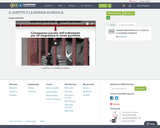
IL DIRITTO E LA NORMA GIURIDICA
- Subject:
- General Law
- Law
- Material Type:
- Lesson Plan
- Author:
- MARIA QUARANTA
- Date Added:
- 03/08/2017

IL DIRITTO E LA NORMA GIURIDICA
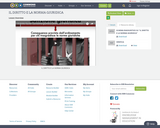
IL DIRITTO E LA NORMA GIURIDICA

This is a PBL for first grade social studies about the importance of rules in the classroom, school, and community. This PBL will require students to create a set of classroom rules for the class to follow using either a video or poster.

This is a classroom inquiry learning project that explores school's rights of search and seizure, student's rights of privacy, and when schools can search private property. This is a lesson plan that lays out the required work and preparation that goes into using this type of project in the class.
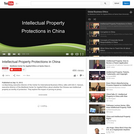
Liu Baocheng, executive director of the Center for International Business Ethics, talks with Kirk O. Hanson, executive director of the Markkula Center for Applied Ethics about whether the Chinese see intellectual property as worthy of protection. They explore the impact of pricing on piracy.

This is a lesson about crystal growth. Leaners will grow a sugar crystal and learn how this relates to growing protein crystals in space. The lack of gravity allows scientists on the space station to grow big, almost perfect crystals, which are used to help design new medicines. This is science activity 2 of 2 found in the ISS L.A.B.S. Educator Resource Guide.

This syllabus may be used in an interviewing and counseling course.

This syllabus may used in an interviewing & counseling course.

Este material está diseñado para dar una pequeña introducción en materia de contenido legal sobre la legislación educativa guatemalteca, está diseñado para estudiantes de un bachillerato en educación, un profesorado o bien para personas que trabajen en la educación media guatemalteca. El propósito fundamental es conectar términos y su aplicación en materia de derechos humanos, dado que es la educación la que en primera instancia debe de velar por la protección y socialización correcta de éstos.
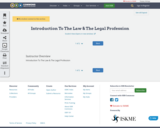
Introduction To The Law & The Legal Profession
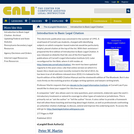
This is not a comprehensive citation reference work. Its limited aim is to serve as a tutorial on how to cite the most widely referenced types of U.S. legal material, taking account of local norms and the changes in citation practice forced by the shift from print to electronic sources. It begins with an introductory unit. That is followed immediately by one on "how to cite" the categories of authority that comprise a majority of the citations in briefs and legal memoranda. Using the full table of contents one can proceed through this material in sequence. The third unit, organized around illustrative examples, is intended to be used either for review and reinforcement of the prior "how to" sections or as an alternative approach to them. One can start with it since the illustrative examples for each document type are linked back to the relevant "how to" principles.

This week, Stan Muller launches the Crash Course Intellectual Property mini-series. So, what is intellectual property, and why are we teaching it? Well, intellectual property is about ideas and their ownership, and it's basically about the rights of creators to make money from their work. Intellectual property is so pervasive in today's world that we thought you ought to know a little bit about it. We're going to discuss the three major elements of IP: Copyright, Patents, and Trademarks.
ALSO, A DISCLAIMER:
The views expressed in this video do not necessarily reflect those of the United States Copyright Office, the Library of Congress, or the United States Government.
The information in this video is distributed on an "as-is" basis, without warranty. While precaution has been taken in the preparation of the video, the author shall not have any liability to any person or entity with respect to any loss or damage caused or alleged to be caused directly or indirectly by any information contained in the work.
This video is intended for educational purposes only and is not intended to be, nor should it be construed as, legal advice. Intellectual property law is notoriously fact-specific, and this video (or any other single resource) cannot substitute for expert guidance from qualified legal counsel. To obtain legal guidance relevant to your particular circumstances, you should consult a qualified lawyer properly licensed in your jurisdiction. You can contact your local bar association for assistance in finding such a lawyer in your area.
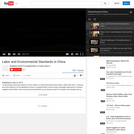
Liu Baocheng, executive director of the Center for International Business Ethics, talks with Kirk O. Hanson, executive director of the Markkula Center for Applied Ethics, about mixed messages delivered to Chinese suppliers about labor and environmental standards as purchasers push for cheaper and cheaper prices, with big players almost dictating the terms of contracts. They discuss the possibility of instituting international labor standards.
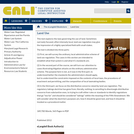
This text explores the laws governing the use of land. Sometimes narrowly focused, often intensely local, land use regulation may give the impression of a highly specialized field with small stakes.The text is divided into three parts: First, we will survey the ordinary, local administrative scheme of land use regulation. The cases in this section are intended to establish what that system is and what itŐs standards are. In the second part of the course, we will turn our attention to cases illustrating litigation attacks on the ordinary administrative scheme. The purpose here is not, as it was in the first part, to understand better the standards the administrators should apply, but to understand the constraints imposed on the contents of local laws, the procedures of enactment and permitting, and the composition of local lawmaking bodies. In the third part, we focus on the distributive concerns raised by land use regulation. The regulatory takings doctrine has gone from, literally, nothing, to wrestling to disentangle distributive concerns from substantive ones, to trying to craft either rules or standards to identify regulations that go Ňtoo farÓ and should be considered ŇtakingsÓ within the meaning of the Fifth Amendment. We will consider what the doctrineŐs purposes are, how it should be governed, and how it should be invoked as a procedural matter.
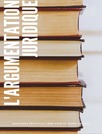
L’expertise du juriste ou de l’avocat ne s’arrête pas à la maîtrise du droit. Il doit non seulement pouvoir déterminer les règles de droit applicables dans une situation donnée, mais aussi savoir les utiliser et les présenter pour convaincre un juge du bien-fondé de la position qu’il défend. Dans cette veine, il est nécessaire de pouvoir argumenter de manière pertinente et convaincante.
Il existe de nombreuses manières d’argumenter. Sans chercher à toutes les présenter, nous tenterons ici de vous présenter quelques éléments pour vous aider à construire vos premiers argumentaires juridiques.
Ressource éducative libre pour le cours CML 1611 Compétences et habiletés juridiques à l’Université d’Ottawa (Faculté de droit – Common Law).
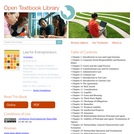
This textbook provides context and essential concepts across the entire range of legal issues with which managers and business executives must grapple. The text provides the vocabulary and legal acumen necessary for businesspeople to talk in an educated way to their customers, employees, suppliers, government officials—and to their own lawyers.

Runway extension, construction of works in protected areas, subsidizing sustainable projects... they all happen within a design space, limited amongst others by legal rules and requirements. To make optimal use of the design space, you have to know about these rules and requirements. When does a contract have to be tendered out, what rules are then applicable, what can be subsidized and what are the restrictions, how to comply with air quality requirements and can a frog really block a project? What alternative designs can be given in order to avoid legal problems? These and other problems will be addressed in this course.

Legal Writing I & II; Legal Research and Writing & Introduction to Litigation Practice contains a brief discussion of all of the topics covered in a law school courses on legal writing, including a typical first semester course on legal research, analysis and writing an objective memorandum, as well as a second semester course on persuasion and writing an appellate brief, motion to dismiss or motion for summary judgment. The discussion focuses on the basics of analogical reasoning and persuasion and leaves out the minutiae. Each topic is taken one step at a time, with each step building on the step before it. The sources of law are presented first, then legal research, and reading and analyzing cases and statutes. The book covers analogizing a case to a fact pattern and marshaling the relevant facts to the elements of a statutory rule next. And then first section of the book concludes with legal citation, CRAC and CREAC, and writing a legal research memorandum. The text also includes a lot of samples and examples of how the author would write a case brief, a legal memoranda and an appellate brief, as well as an appendix with charts, outlines and exercises students can use to practice these skills. Legal Writing I & II; Legal Research and Writing & Introduction to Litigation Practice covers all the skills students need to know to work at a law firm, and everything students have to learn to begin practicing in litigation department of a firm.
The chapters of the book are as follows:
1.Sources of Law (Local Ordinances and Bylaws, State and Federal Law: Statutes, Regulations, Cases, Executive Orders, International Treaties, Compacts, and Agreements)
2.Legal Research (Secondary Sources, Researching Statutes, Researching Cases, Paper Research v. Computer Research)
3.Briefing Cases (Facts, Issue, Rule, Holding, Reasoning)
4.Applying Cases and Analogical Reasoning (Analogizing a Case to a Fact Pattern, Distinguishing a Case from a Fact Pattern)
5.Analyzing Statutes and Marshaling Facts (Determining a Statutory Formula, Definitions, Marshaling Facts to a Statutory Rule, Comparing a Case Interpreting a Statutory Rule to a Fact Pattern)
6.Citation (How to Cite Cases, How to Cite Statutes and Regulations, Quotations, Signals, Parentheticals, Reference Materials)
7.IRAC (Issue, Rule, Application, Conclusion, Using “IREAC” when it is Necessary to Explain the Rule, Using “Ferrari Has Really Cool Race Cars” when it is Necessary to Analogize or Distinguish a Case, Synthesizing a Rule from Multiple Cases, Explaining and Applying a Rule with Multiple Cases)
8. Objective Legal Memoranda (Organization of a Research Memo, Sample Memo)
9. Other Examples of Legal writing (Client Letters, Exam Answers)
10. Improving Your Writing (Additional Tips and Resources)
11. Credibility in Persuasive Writing (the importance of writing well)
12. Bias (Implicit Bias, Microaggressions, Dealing with Bias in Others)
13. Ethical Rules for Advocacy (Competence, Diligent, Honesty and Fairness)
14. Civil and Appellate Procedure (Rules for the Form and Content of Briefs and Memos)
15. Requirements for Civil Motions and Standards of Review for Appeals
16. Persuasive Writing (Writing Persuasive Facts, Writing Persuasive Arguments)
17. Memoranda in Support of Motions (Applying the Rules of Civil Procedure to a Sample Memo)
18. Motion Session (Arguing a Motion Before a Trial Court Judge)
19. Appellate Briefs (Applying the Rules of Appellate Procedure to a Sample Brief)
20. Oral Argument (Arguing an Appeal before a Panel of Appellate Court Judges)
In addition, there are numerous examples, exercises and sample documents in the appendix.
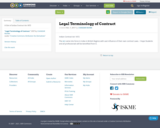
A Gist of Indian Contract Act 1872

Freedom of religion or belief is an increasingly relevant topic in human society. Lifting the Spirit: Human Rights and Freedom of Religion or Belief provides comprehensive and thought-provoking lessons about the human right to freedom of religion or belief without surveying world religions or endorsing any particular belief. Lifting the Spirit relates the worship, observances, practices, and teachings of all religions and beliefs to fundamental human rights principles. It provides background information, ideas for taking action, and interactive exercises to help people learn about the freedom of religion or belief: a right that is guaranteed in Article 18 of the Universal Declaration of Human Rights. Designed for use in secondary classrooms, religious institutions, and youth advocacy organizations around the world, both the content and organization of Lifting the Spirit aim to be adaptable to many different national and cultural settings.